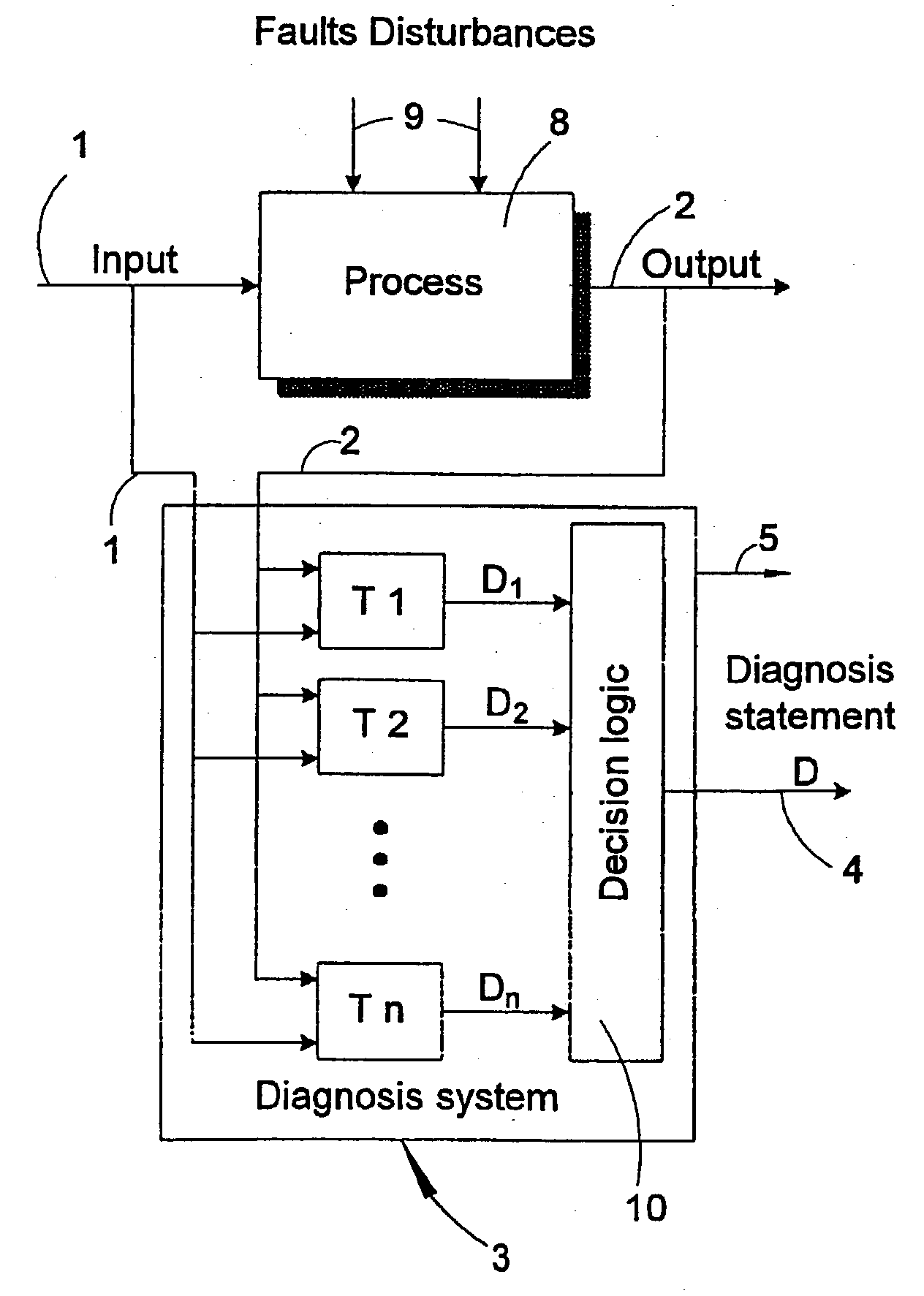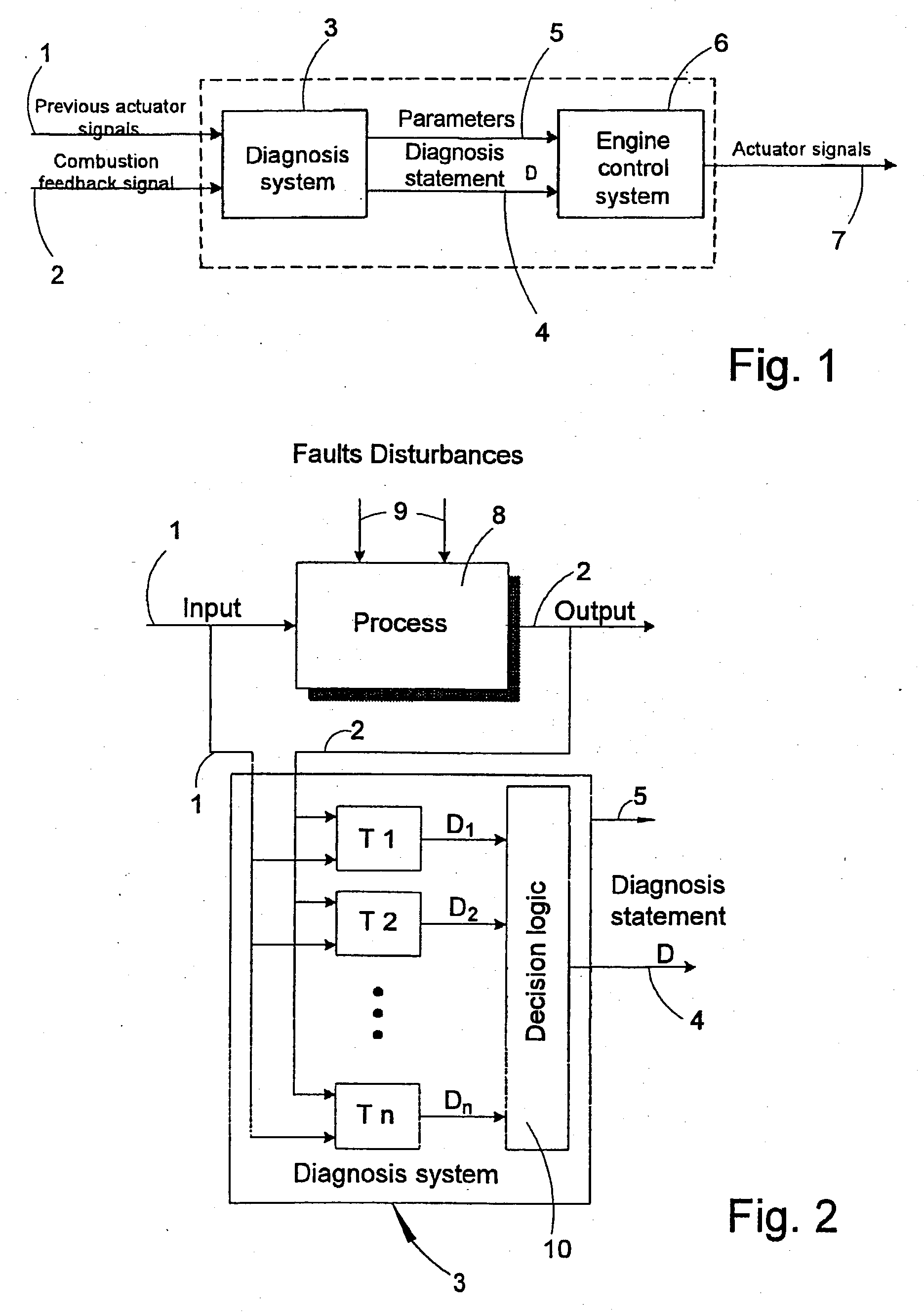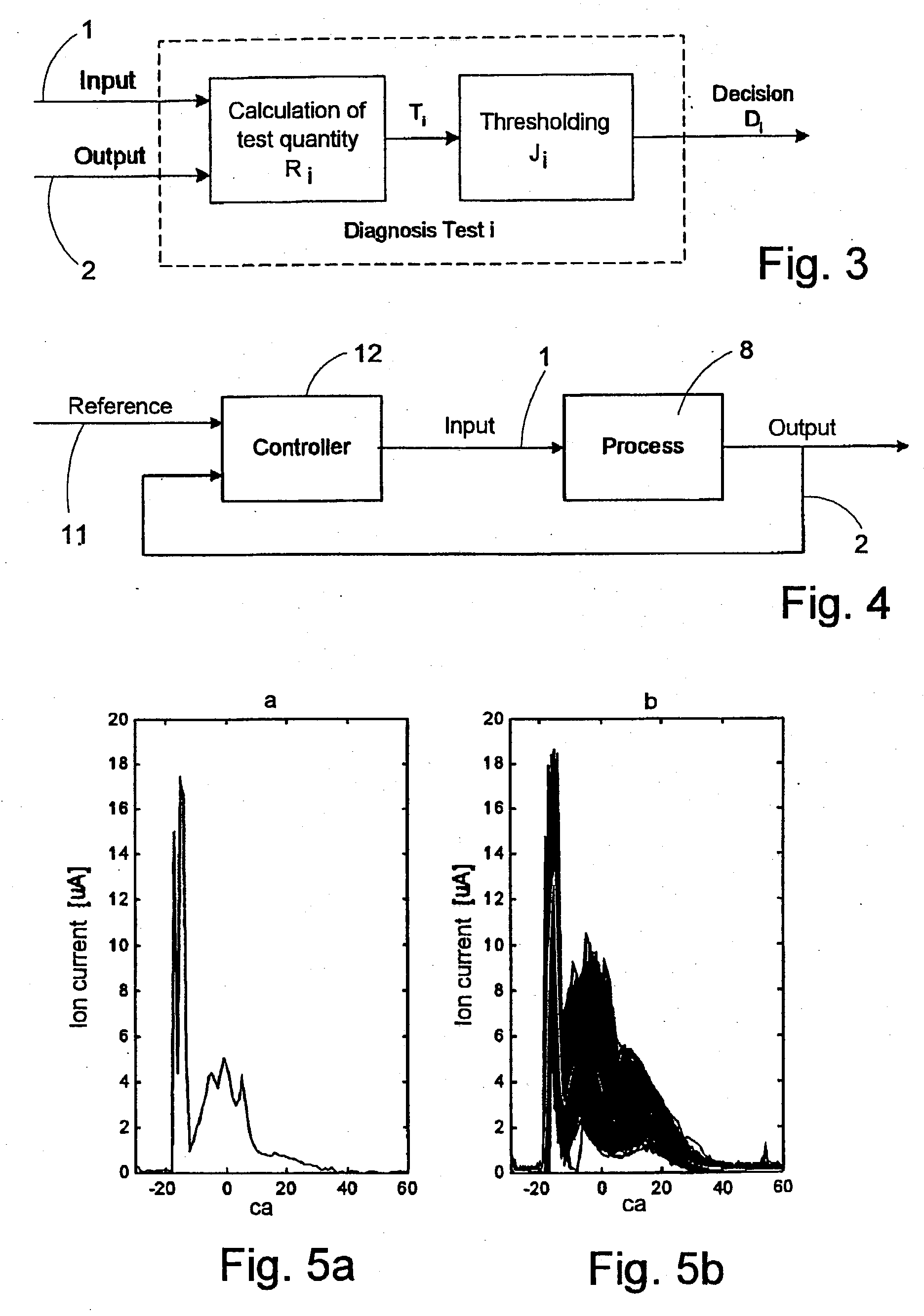Method in connection with engine control
- Summary
- Abstract
- Description
- Claims
- Application Information
AI Technical Summary
Benefits of technology
Problems solved by technology
Method used
Image
Examples
Embodiment Construction
[0038] To further explain the concept behind the classification and the parameter estimation according to the invention, there is now presented an example where the ionisation current signal is used as combustion feedback signal. The ionisation current (and also the cylinder pressure) is directly coupled to the combustion and contains all necessary information on the combustion quality. Hence it is well suited for engine control purposes.
[0039] Modelling of Ionisation Current Signals
[0040] FIG. 5a-b shows two examples of ionisation current cycle-to-cycle variations and average behaviour. FIG. 5a shows a single ionisation current curve and FIG. 5b shows a number of consecutive cycles and--inverted--the average of these curves.
[0041] Several studies, e.g. Nielsen and Eriksson (1998) according to the above, have shown that the ionisation currents can be effectively modelled using a parametric radial basis function network. In this example there is considered models of the form:
I.sup.(....
PUM
 Login to View More
Login to View More Abstract
Description
Claims
Application Information
 Login to View More
Login to View More - R&D
- Intellectual Property
- Life Sciences
- Materials
- Tech Scout
- Unparalleled Data Quality
- Higher Quality Content
- 60% Fewer Hallucinations
Browse by: Latest US Patents, China's latest patents, Technical Efficacy Thesaurus, Application Domain, Technology Topic, Popular Technical Reports.
© 2025 PatSnap. All rights reserved.Legal|Privacy policy|Modern Slavery Act Transparency Statement|Sitemap|About US| Contact US: help@patsnap.com



